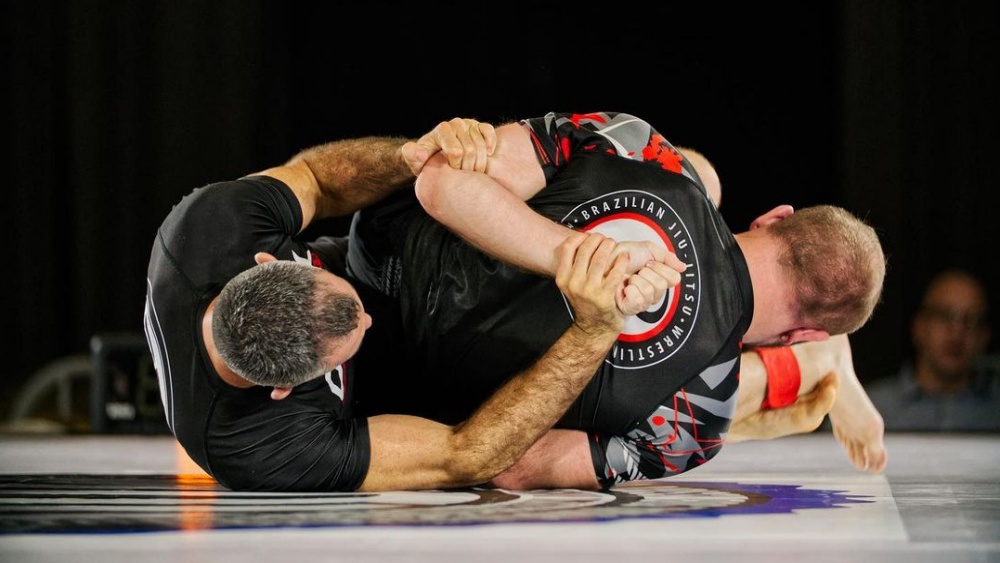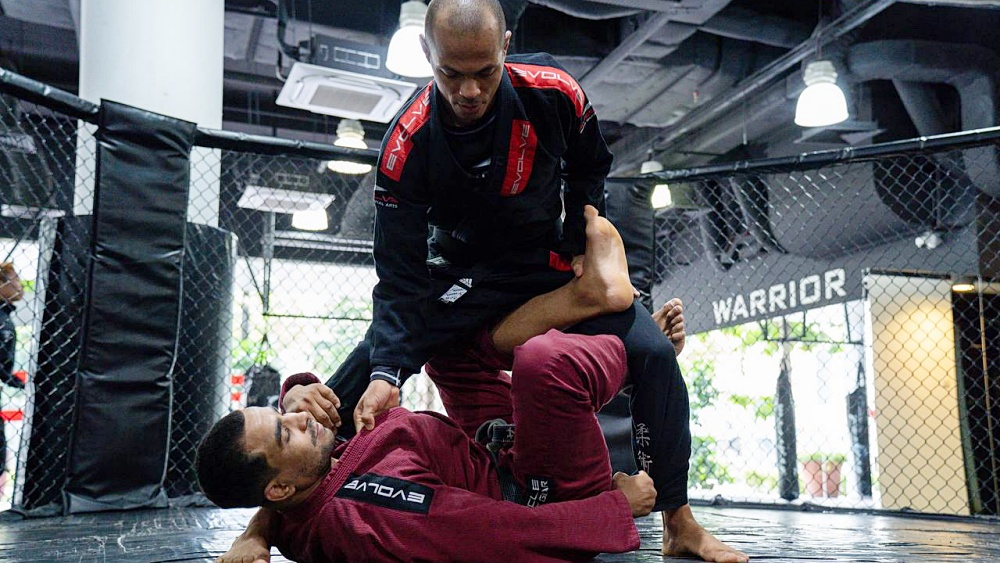One of the most effective ways to subdue a resisting opponent is to put their hands behind their back. This is easier said than done, though, as you’ll surely get a lot of resistance before you can do this successfully. Usually seen and used in the police force, immobilizing the arms by putting them behind the aggressor’s body significantly decreases a person’s strength because of the limited range of motion, thus, minimizing their ability to fight back. Today we’ll discuss a technique called the hammer lock in Brazilian Jiu-Jitsu.
What Is The Hammer Lock?
The hammer lock is one of the few submissions you can apply inside the opponent’s closed guard. Similar to the kimura, the hammer lock is a shoulder lock where the opponent’s wrist is pushed towards the back, forcing it to bend behind upwards towards the neck, which greatly applies pressure to the shoulder joint. Often used by military personnel when arresting an aggressor, this old technique can be traced back to wrestling. The technique is also known as the chicken wing and is similar to the Dagestani handcuff, a move made famous by Khabib Nurmagomedov.
How To Perform The Hammer Lock
The hammer lock is an excellent tool to pass the guard and restrain an aggressive opponent. One of the good things about this technique is that it can be performed from various positions, such as the top closed guard, bottom side control, passing the guard, or even when the opponent turtles. Here’s how to apply the hammer lock from the turtle position.
When applying the hammer lock from the turtle position, it is essential to use the wrist ride properly. It is applied to bring the opponent’s elbow that you are attacking out, away from their lats. You want the opponent’s wrist to come through underneath as you isolate their elbow. To start, assuming you’re on the right side of the turtle, place your left hand underneath the opponent’s far hip and your right hand controlling their near wrist (right wrist).
Typically, you want your knee behind the opponent’s glute or kneeling on the right side of the mat. From here, use your right hand to control the opponent’s right wrist or fingers, but don’t aim for the forearm too much. Naturally, the opponent will post their right elbow to the mat. Using the spiral motion, start driving your left hand and right hand to push the wrist towards the mat and extend your right elbow outwards. As the opponent drops, their right hand will come out behind their back.
The trick is that you don’t want the opponent to roll. Therefore body positioning is essential. As you control the opponent, you want your weight dropped on their back while holding their far hip and wrist as you make the spiral motion to expose their right wrist behind. As they fall on their shoulder on their right side, maintain a full grip on their right wrist and the pressure on their back by dropping your weight.
Slide your left hand and shoot for an underhook to cup the opponent’s left shoulder, placing your hand on top. From there, keep pressuring the opponent down with your chest, and drive toward their left shoulder to flatten them down a bit. While controlling the wrist, slide your left knee underneath their forearm and pinch it with their right shoulder using your right knee. Doing so puts tremendous pressure on their right shoulder, likely forcing the opponent to tap.
Some grapplers like pulling the opponent down when riding the turtle from the right side. While not wrong, you can also stretch the opponent’s right leg out using your right hand. This is because if you create a lot of space, you can easily throw a leg lift and set up taking the opponent’s back.
If the opponent extends their right hand up, making reaching their wrist difficult, you can apply a near-side underhook using your right hand to cup their right shoulder. Pull the opponent to the right side using your underhook to bring their hand closer. Likewise, finish the hammer lock with the same setup.
Hammer Lock From Cross Body Ride
From the cross-body ride, where the opponent’s far leg (left leg) is trapped with the triangle, control their right hand by sticking it to your chest with a two-on-one grip. From there, the goal is to put the opponent’s right hand on the mat. Once planted, the closer you can get the opponent’s hand to their armpit, the tighter the pressure. This position makes it difficult for the opponent to straighten their arm as to extend the arm, the opponent has to move their head away from you.
To do so will be challenging for the opponent as you have diagonal control over their left leg and right hand. Take your left hand from the two-on-one grip and plant your forearm over the opponent’s wrist. Take your hand through the space between their forearm and bicep and start cupping the opponent’s right shoulder. Now that your left forearm and elbow are wedged on the opponent’s right wrist, it will be more difficult for them to straighten their arm to relieve the pressure.
Once secured, finalize the hammer lock by placing your right hand on top of your left hand, which is cupping on the opponent’s right shoulder. Finish the hammer lock by pulling the opponent towards you as you take the opponent’s right hand up to the armpit with your left elbow. This gives you a powerful hammer lock submission similar to how the kimura is finished by having the elbow up and wedging the hand in place with the left elbow, allowing you to take the hand up to the armpit.
Conclusion
In BJJ, sometimes you’re the hammer and sometimes the nail. Learning fundamental techniques like the hammer lock will help you develop your overall game safely and consistently. Remember that mastering the hammer lock requires many hours of repetition and drilling, as with all techniques.
You may also like:
















